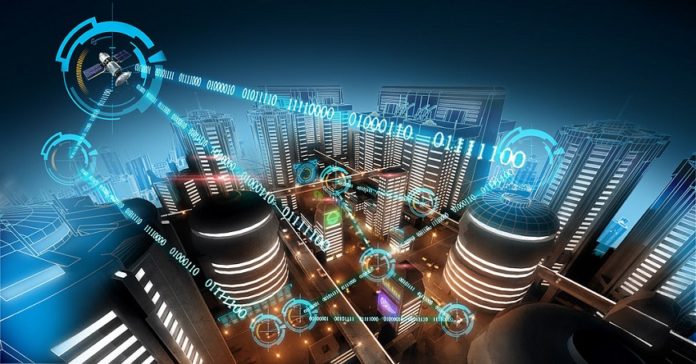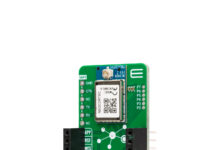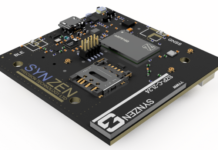
The Internet of Things, or IoT—the network of devices connected to the internet and to each other—is growing at an astounding rate. A report by communication tech company Ericsson estimates that by 2022 there will be around eighteen billion Internet of Things devices communicating with each other around the world. This represents an enormous opportunity for businesses looking to operate more effectively and efficiently.
And, those increased efficiencies will impact HR departments worldwide. “While humans are still in the center of all these machines, it’s time for HR to up the ante and prepare the workforce for these new waves of technology,” writes Patrick Willer in a post for ERE Media’s Talent Management and HR site.
“Companies are facing another wave of technology that will have a big impact on the way we work. The human resources department is in a unique position to prepare the workforce for this new way of working and to utilize the big data generated by IoT,” concludes Patrick Willer.
The following use cases will help you anticipate some of the many changes coming our way as IoT acceptance continues to build.
It’s All About the Data
Much of the advantage the Internet of Things brings to business is in the form of data. You’ve probably heard of Big Data, a term that refers to the massive amounts of information collected and stored by connected devices. And as big as Big Data was when it first entered the scene in the early 2010s, it’s only getting bigger by the day. That growth is due in large part to the sensors that make up much of the Internet of Things. Companies are using these sensors and devices to gather enormous amounts of information, which they can then leverage to increase efficiency in amazing ways. Here are five examples of how the IoT is growing efficiency across industries.
- The IoT Decreases Maintenance Times
Equipment maintenance is an unavoidable part of doing business; downtime due to maintenance doesn’t have to be, though. The transportation industry, for example, is using the IoT and Big Data in smart ways to anticipate maintenance needs and take care of issues in more efficient ways. The aim is to address problems before they spiral into costly emergencies.
One of the leading innovators in this space is Rolls Royce. The company builds its Engine Health Management system into its aircraft engines. The system, a combination of sensors and powerful analytics tools, generates and sifts through terabytes of data on every flight, allowing Rolls-Royce to identify issues and plan maintenance well in advance. This helps minimize delays for passengers and keep fuel and other operating costs down for airlines.
- The IoT Helps Source Public Safety Data
Another area where the Internet of Things can increase efficiency is in the collection and analysis of public safety data. In this field, time is especially critical. The more difficult and time-consuming it is to gather and assess info, the greater the chances of someone being injured in a disaster like a fire, storm, or avalanche.
The latter is the focus for Mountain Hub (formerly known as Avatech), a startup that was born at MIT and is developing smart solutions to help snow-safety professionals assess avalanche risks. One of the company’s flagship products is the Avatech SP2, a foldable probe that can be inserted into a snowpack to test the structural integrity in seconds. The probe measures the force needed to push it into the snow using pressure sensors, and it displays the info on a screen built into the handle. More importantly, it can sync with a mobile device and upload that data to build a global map of snowpack conditions and avalanche risks based on collected user data.
- The IoT Helps Streamline and Automate Manufacturing
Manufacturing has been heavily impacted by the Internet of Things, with spending on IoT technology expected to reach $70 billion per year by 2020. It’s likely that much of that investment will go toward the same objectives being focused on currently: asset tracking, maintenance, and control room function consolidation.
Many major global manufacturers are jumping on the bandwagon, including Harley-Davidson, which has been retrofitting existing equipment in its plants with sensors and a software system to alert managers about potential issues and keep everything running smoothly and efficiently. The company considers the project a success—it has allowed them to stop keeping and maintaining redundant equipment at the plant to serve as backup in case of failure.
- The IoT Helps Streamline Retail Operations
In the retail world, big names like Walmart and Macy’s are now using IoT technology to streamline operations and allow brick-and-mortar stores to compete with online channels. The tech helps with inventory management, loss prevention, and data gathering on which items are selling and which are taking up space. This allows stores to optimize layouts and make the best use of their limited space.
Macy’s uses a system of RFID tags—tiny connected chips with antennas to broadcast data—that significantly reduces the amount of time and manpower needed to replenish stock and manage inventory. The company places the RFID tags in the pricing labels of merchandise. The tags can then be scanned by employees with handheld units that can grab info from an entire rack of clothes in one pass and then pinpoint the location of items missing from the rack in the stockroom. The system, originally piloted in New York in 2009, is being rolled out to all its locations by the end of 2017.
- The IoT Helps Streamline City Management
Businesses aren’t the only organizations that can benefit from the Internet of Things. Cities are also using the technology to more efficiently handle common issues, from traffic jams to building maintenance. Europe is leading the pack here, with several major cities working on IoT initiatives.
London is testing a smart parking system designed to speed up the process of finding an available parking space. The city believes this will help alleviate traffic congestion. Another example is Copenhagen, where over 40 percent of the population uses bikes for transportation. The city is using sensors to monitor bike traffic and improve routes.
These are just a few examples—the possibilities the IoT opens for organizations and businesses is tremendous. It won’t be long before any company that wants to compete will have to jump on board. How will that impact your HR department? Are you prepared?
By: Jackson Frey
Source: www.talentculture.com


















